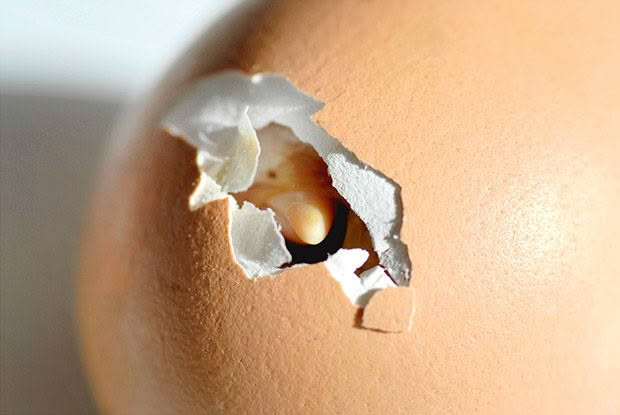18 common problems with hatching eggs (and how to fix them)

Knowing the cause of a chick abnormality can help you prevent it in your next hatch.
Words: Sue Clarke
It’s good practice to break open unhatched eggs. It can often show you if the egg was fertile, at what stage the embryo died, and possibly why. Infertile eggs will contain entirely yellow contents, with no signs of an embryo or blood.Warning: Cracking open a dud egg can be risky. It’s likely the contents will be rotten; worse are the eggs which explode when you touch them, covering you in putrid ooze. Wear old clothing and perhaps cover the egg with a bag or towel as you touch it to avoid splatter.
The following is mostly relevant to people hatching eggs in an incubator. A good mother hen does most of the hard work for you.
1. Infertile eggs at lay
Males sterile; poor hereditary hatching rate in flock; too many or too few males; males fighting with each other; males too old; inadequate nutrition or insufficient water (or water too cold) to breeding birds; seasonal decline in fertility of hens due to reducing day length; disease in the flock.
2. Eggs not showing signs during candling on Day 7
Eggs over-heated; improper incubator use; wrong temperature at earliest stage of incubation; of development breeding flock out of condition; improper nutrition of parents; poor hereditary hatching rate in flock; possible inbreeding.
3. Rotten egg
Breeding flock out of condition; temperature too high or too low in incubator or hen left eggs too long; lack of ventilation around incubator; improper turning of eggs.
4. Chicks fully formed but dead without pipping egg
Low average humidity in incubator; too low or too high humidity at around Day 18.
5. Eggs pipped, but chick dead in shell
Low average humidity; inadequate ventilation.
6. ‘Sticky’ chick (smeared with egg contents)
Low average temperature; average humidity too high; inadequate ventilation.
7. Dry shell sticking to chicks
Low humidity at hatching time.
8. Chicks hatching too early with bloody navels
Temperature too high.
9. Rough or poorly healed navels
High or variation in incubation temperature; excessive humidity during hatching.
10. Chicks too small
Low humidity
11. Large, soft-bodied, ‘mushy ’chicks, hatched but dead, bad odours
Low average temperature; poor ventilation; omphalitis (navel infection) from bacterial contamination in the egg.
12. Weak chicks
Respiratory disease in parents, eg infectious bronchitis (IB).
13. Chicks with short down
High temperature; low humidity; excessive ventilation at hatching time.
14. Gasping chicks
Average temperature too low; eggs stored too long; poor storage of eggs before incubation.
15. Delayed hatch, eggs not starting to pip until after Day 21
Excessive temperature in last 3 days of incubation; inadequate ventilation in incubator.
16. ‘Draggy’ hatch (some chicks early, others slow to hatch)
Excessive temperature in last 3 days of incubation; improper storage of eggs before incubation.
17. Crippled chicks, eg cross beak, missing eye, wry neck, crooked toes, splay legs
Excessive temperature in last 3 days of incubation; improper storage of eggs; heredity issues; improper temperature during incubation; poor or incorrect parental nutrition; hatching trays too smooth for chicks to stand on.
18. Malformed chicks
Poor or incorrect parental nutrition; excessive number of malpositions among dead chicks in shells (eg chicks upside down); improper turning or setting of eggs in incubator; inadequate ventilation; abnormally high or abnormally low incubator temperature; insufficient moisture; hereditary issues; shell faults due to natural, heredity, or nutritional issues; damage or vibrations to eggs in transit
(eg, if posted to you).
Love this story? Subscribe now!
 This article first appeared in NZ Lifestyle Block Magazine.
This article first appeared in NZ Lifestyle Block Magazine.
